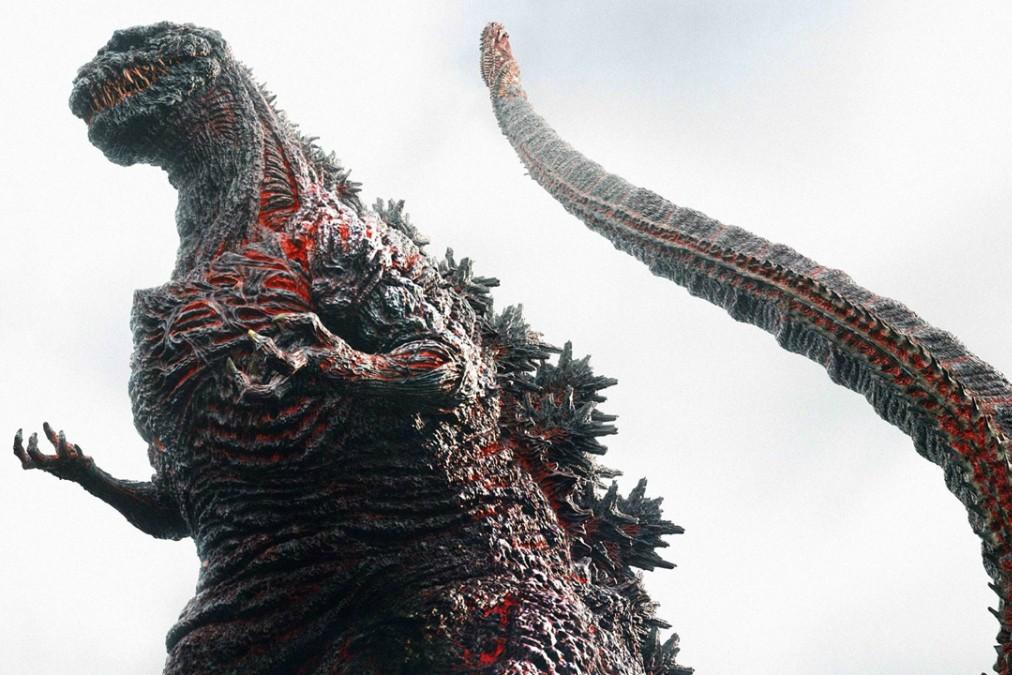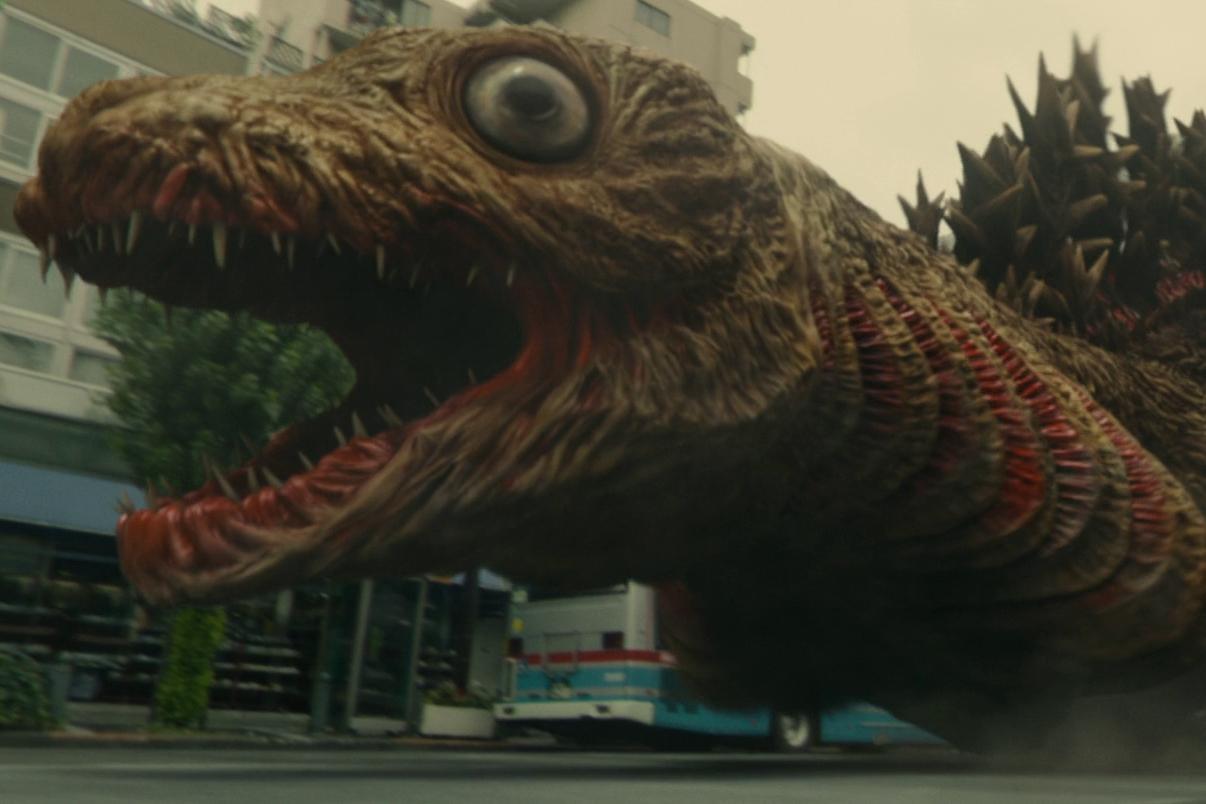Shin Godzilla: Proof the King of Monsters only truly feels at home in Japan
Toho's reboot of the franchise acts as a reminder of the creature's fascinating historical origins

Your support helps us to tell the story
From reproductive rights to climate change to Big Tech, The Independent is on the ground when the story is developing. Whether it's investigating the financials of Elon Musk's pro-Trump PAC or producing our latest documentary, 'The A Word', which shines a light on the American women fighting for reproductive rights, we know how important it is to parse out the facts from the messaging.
At such a critical moment in US history, we need reporters on the ground. Your donation allows us to keep sending journalists to speak to both sides of the story.
The Independent is trusted by Americans across the entire political spectrum. And unlike many other quality news outlets, we choose not to lock Americans out of our reporting and analysis with paywalls. We believe quality journalism should be available to everyone, paid for by those who can afford it.
Your support makes all the difference.It’s all too easy to associate Godzilla with kitsch. Rubber suits, dodgy CGI, extras clutching their heads and screaming up towards the sky. But that’s not the complete story. Not the one that started in 1954, when Toho’s original version of the film was produced by a country still under the shadow of war.
It’s a film shaped by lingering shots of utter decimation, of flattened buildings and streets littered with debris. The shiver left behind by the destruction of Hiroshima and Nagasaki, still a memory barely faded in colour. Monsters are physical manifestations of fear, and Godzilla funnels the trauma of nuclear attack into a being of mythological nature.
This is the spirit carried on by Toho’s revival of the franchise in Shin Godzilla, the first to be produced by the studio since 2004’s Godzilla Wars, but one that takes into account how the King of Monsters, the nightmare of radioactive mutation who can flatten cities with his atomic breath, must change to reflected the modern world.
Disasters are different now. They crowd into our smartphones; a cacophony of names, places, and terrors. Japan knows this phenomenon well, in the aftermath of 2011’s Tohoku earthquake, tsunami, and the ensuing Fukushima disaster. In Shin Godzilla, each individual location the creature destroys is dutifully listed in an onscreen caption. These are real neighbourhoods, real homes, and workplaces.
Godzilla’s nuclear terrors are now double fold. It’s momentous to think Japan has now suffered both the only two uses of nuclear weapons for warfare in history, but also the second biggest nuclear accident after the Chernobyl disaster. That leaves its own peculiar kinds of scars, and the country’s intimacy with the ideological terror of Godzilla is what makes a film like Shin Godzilla feel so at odds with its American counterparts.
Gareth Edwards’ 2014 Godzilla viewed its threat as apocalyptic. It’s all darkened skies, rumbling storms. But Shin Godzilla is about the reality of disasters and how we deal with them, on multiple levels. The crowds of people run and scream like any traditional kaiju movie, but elsewhere we see people with their phones up. “I’m getting scoop footage!,” one onlooker shrieks. Others are hooked to their news feed, spectating from the safe parts of Tokyo while the other half burns.
That’s not to say Godzilla isn’t the main attraction here, and the film actually manages to find innovation in what is such an iconic character. He first crawls out of the ocean a panicked, unblinking aquatic life form, red liquid spurting from his folds. Possessing seemingly zero joints, he travels by slamming his body into buildings. He’s basically a giant magic worm toy. He evolves, though. Grows taller, more menacing, and more like the Godzilla we recognise as the film goes on.
However, the film’s heart doesn’t lie with the spectacle of its creature. Shin Godzilla is obsessed with bureaucracy and a government’s response to disaster. The vast majority of the film’s running time takes place in meetings, as we work through the various levels of command, all the way from the prime minister down to the solider firing the first missile.
Disaster response is now so controlled by set plans of action, but Shin Godzilla presents a particular fear that a nuclear future threatens so much more than any natural phenomenon: the idea of the unprecedented, the thing for which there is no set plan of action. And in a world where the idea of all-out nuclear warfare is dominating news headlines, Shin Godzilla has somehow become even more urgent in its terrors.
Rando Yaguchi (Hiroki Hasegawa), the Deputy Chief Cabinet Secretary, best reflects Japan’s own anxieties towards disaster response. After Fukushima, the government came under heavy fire for the way it dealt with the disaster, and Godzilla’s attack is pointedly mounted in two waves, like aftershocks.

Yaguchi looks over the destruction of the first wave; while others are in shock at the amount of destruction achieved in Godzilla’s two hour rampage, he is more concerned with the fact the government had two hours to respond – what they achieved is a disappointment to him.
Shin Godzilla even slips into satire to make its points. When the creature is first discovered off the coast, a press conference is held to assure worried citizens he’d never come to shore. One cut later, and he’s on the land. Those gathered now can’t even figure out which agency he falls under. More pointed in its commentary, however, are the barbs directed at Japan’s international relations. The US, for example, is represented as the shadiest of allies; eager to swarm in on the pretence of good will, but with ulterior motives which inevitably come to surface.
The film isn’t without its excesses, certainly. The creature’s biology makes little sense, so characters are forced to do a major amount of heavy lifting to try and shuffle through various outlandish explanations, as they crowd around maps and feverishly point to things.
As a purely cinematic experience, Edwards’ Hollywood take was so immersive, so monumental in its scope that it does, inevitably, feel like the more successful enterprise. What Shin Godzilla does offer, however, is one major counter: Godzilla’s real home is Japan, and anything else feels like a glitzy vacation.
Shin Godzilla is out in UK cinemas now.